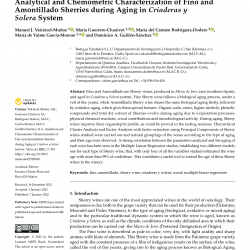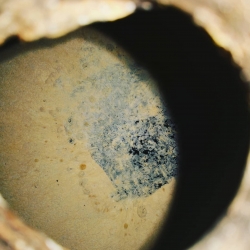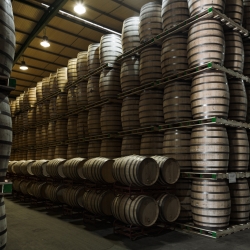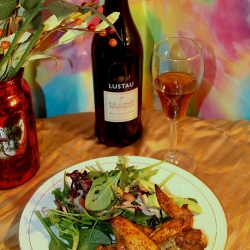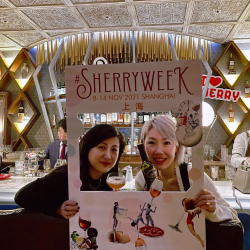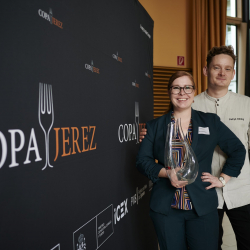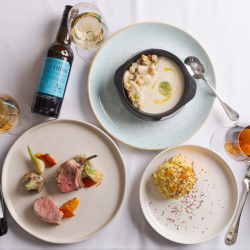Manzanilla, a Wine Linked to its Origin, Sanlúcar de Barrameda
A little over a year ago Sanlúcar and the whole Sherry region celebrated the first fifty years of the Denominación de Origen Manzanilla - Sanlúcar de Barrameda. In fact it was the 15thDecember 1964 when the Regulations were published by which the wine of Sanlúcar was afforded this Spanish legal protection then given to wines of superior quality. Not many Spanish Denominaciónes de Origen have reached this age and certainly fewer still have such a long and productive history. Indeed fifty years seem as nothing compared to the centuries old winemaking tradition of Sanlúcar and the rest of the region, but we should remember that the concept of Denominación de Origen only has a little over eighty years of history within our legal framework.
This legal protection came about for the first time in Spain on the 26th May 1933 with the publication of the Wine Statute. This regulation set out the names of thirty traditional regions, cities or places which had already achieved proven prestige for the quality of their wine: Jerez, Rioja, Valdepeñas … and also Manzanilla - Sanlúcar de Barrameda. In accordance with the provisions of the law, the bodegueros of Sanlúcar and the other towns of the area set about drawing up the corresponding regulations, though in the end this first document would not see the light of day. Work continued during most of 1934 at the Jerez Viticultural Station in parallel to the drawing-up of the Denominación de Origen Jerez-Xérès-Sherry, with many points in common. The text included some interesting curiosities, like for example that Manzanilla soleras should have at least five criaderas (or “clases” as they are known in Sanlúcar slang), minimum stocks for bodegas de crianza of 400 butts, or a sales quota of 60%. They adopted as the coat of arms of the Denominación that of the Sanlúcar Chamber of Commerce with its legend “movement enriches”, which in this case provides a good allegory for our solera system. In the end however, the regulation was never published, with those drafting it – probably for reasons of saving procedural time - choosing instead to incorporate Manzanilla with the new Denominación de Origen Jerez-Xérès-Sherry as just one more type of Sherry.
The early years of the single Denominación de Origen of the Sherry region were tumultuous; although this first regulation became a model for many others, it without doubt included contradictions which soon proved to be insoluble. By no means the least of these was that registered bodegas were allowed to use wines from the provinces of Huelva, Córdoba and Sevilla, something which totally contradicted the very concept of Denominación de Origen. The tension between producers and merchants that this naturally caused led to the temporary suspension of the Denominación and the publication of successive texts which gradually addressed some of the contradictions of the original.
But furthermore, in the case of Manzanilla our Denominación faced another disruptive problem which was competition from the sale of wines from elsewhere using the name Manzanilla. After various fruitless attempts to protect the authenticity of our wines and in the absence of any other mechanism to protect traditional wine names, the producers decided to give Manzanilla its own Denominación de Origen status, linking it definitively with its genuine place of origin. This would materialise in the Regulations of the Denominación de Origen Jerez-Xérès-Sherry y Manzanilla - Sanlúcar de Barrameda published on 15th December 1964.
The history of the judicial protection of DO Manzanilla would not be complete without referring to the European Community Regulation 1426 of the 26th June 1996 in which it is recognised that there is no need to allude to the name of the locality of production, Sanlúcar de Barrameda, in reference to the only Manzanilla legally possible – that of Sanlúcar. Until then there were not a few interpretations that, since the DO was called “Manzanilla - Sanlúcar de Barrameda”, it was implicit that there could be other Manzanillas. In fact even the High Court of Justice in Madrid pronounced that Manzanilla was a generic denomination for a white wine “which can be freely produced within certain rules.” The Consejo immediately appealed against this mistaken ruling in the higher Supreme Court and at the same time proposed to the Ministry of Agriculture the inclusion of the term Manzanilla in the very limited list of European denominations which are not identified by a geographical name, alongside Cava, Blanquette, Muscadet or Vinho Verde. With the passing of EU Regulation 1426/96 it was finally established that there can be no other Manzanilla and since then, every 26th June, the date the law was published, we celebrate in Sanlúcar and indeed all over the Sherry region, Manzanilla Day.
But apart from all this work for judicial protection, it is truly important that we pay homage to the men and women who for more than fifty years – many, many more – have made such an exceptional wine as Manzanilla possible. These people, whose hard work and skill in the vineyards and bodegas, have given us – and continue to give us – a unique product which is the pride of a people and an entire region. Manzanilla is an oenological treasure and a gift for the senses. Its pale colour and fresh penetrating fragrance, its dry palate, light and full of nuances, make it one of the most special and most enjoyed wines in the world. Without doubt it is a symbol of our culture and our land. And all that is nothing more than the fruit of very particular conditions of land, cultivation and winemaking, but above all the ageing in the bodegas of Sanlúcar de Barrameda.
There are three factors which provide such a special microclimate in Sanlúcar: the river Guadalquivir, the town’s natural limit to the north; the Atlantic Ocean into which the river pours its waters and which forms the western limit to the town; and the salt marshes, a huge area of unrelenting flat land which sits on what was once the river delta. Thanks to this situation the harsh temperatures of the south of Spain are made gentler and the relative humidity rises. Another contributory factor is the topography of Sanlúcar itself which sits on two terraces at different levels, the Barrio Bajo which is at sea level and the Barrio Alto a few metres higher such that the sea breeze, the west wind which brings humidity, is slowed by the higher ground and deposits moisture in the town. These exceptional conditions are perfect for the growth of flor which is abundant in the bodegas of Sanlúcar, and with it come the special organoleptic characteristics and personality of the biologically aged wines.
During its years of ageing Manzanilla becomes a uniquely special wine which could only result from the geographical position of the Sanlúcar bodegas allied to centuries of winemaking tradition.
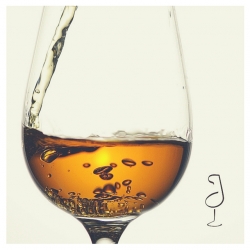

20 May 2016


